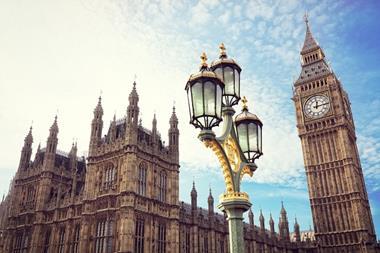Senior figures in UKGI reflect on the controversial discount rate cut decision on its anniversary

David Williams, AXA UK technical director
Looking back to when Liz Truss announced that the discount rate would be cut to -0.75%, what was your reaction?
At the time we were clear the rate needed to change to improve compensation for people who had suffered injuries and we fully supported the review of how the rate was calculated. What we did not expect was such a drastic, overnight change that amounted to over-compensation. The decision came as a shock.
What has the impact of the negative discount rate been for your organisation and the industry?
The root problem (linking the rate to Gilts) had not been addressed and a negative rate cost the industry a huge amount almost as a one-off payment. However, more importantly, the longer it takes to address the more customers will see the impact through increased premiums.
Do the proposed reforms to the discount rate framework go far enough?
We support the proposed changes. It was clear the entire formula needed to change to ensure that people were fairly treated - receiving the right amount of money for their future care. The only way to do that is to more accurately reflect the investment environment and keep the formula under regular review.
When do you expect to see the discount rate change?
The Government aimed to reply to its consultation by the end of last month and, while, the delay is not what we wanted, getting the formula right and agreeing consensus is important. That said, the message from insurers is clear; sorting out the discount rate as quickly as possible is the right thing to do for people who have been injured and our customers more generally.
Steve Treloar, LV= general insurance chief executive

Looking back to when Liz Truss announced that the discount rate would be cut to -0.75%, what was your reaction?
We were really disappointed. In reducing the rate to -0.75%, we became the only country in the world with a negative discount rate. Insurers had no choice but to quickly respond by increasing the cost of car insurance which was a difficult blow to customers, as it came at a time when costs had already been rising because of fraudulent whiplash claims and successive increases to the Insurance Premium Tax.
What has the impact of the negative discount rate been for your organisation and the industry?
When the rate was reduced to -0.75%, we increased the expected cost of large catastrophic claims by £139m. To reflect the fact that we also expected catastrophic injury claims to settle at much higher amounts, we – along with other companies - immediately had to increase prices for car insurance. This unfortunately resulted in higher prices for customers.
Do the proposed reforms to the discount rate framework go far enough?
If the proposed changes get passed through legislation, then yes. Under the proposals which were outlined last September, claimants will still receive 100% compensation but they will no longer be profoundly overcompensated. This will benefit society as a whole by reducing premiums.
When do you expect to see the discount rate change?
I’d obviously hope that it happens sooner rather than later. We completely appreciate the Government has a lot on its plate but the current system is both fundamentally flawed and fiscally irresponsible, so needs to be changed. It’s obviously extremely important that those people who need compensation get the support they need but we also need to strike the right balance between what is right for them as well as consumers more broadly. The sooner the system is changed the better. We’ll then be in a position where we can pass on 100% of the savings to our customers.
Ian Parker, ERS chief executive

Looking back to when Liz Truss announced that the discount rate would be cut to -0.75%, what was your reaction?
My initial reaction wouldn’t be printable! While we had planned for a broad range of outcomes, we certainly never thought we would end up with a negative number.
We communicated the same evening to our brokers telling them of our proposed price increases. It was a tough message but being transparent and on the front foot was important.
What has the impact of the negative discount rate been for your organisation and the industry?
Like most insurers, it cost us millions, and ultimately took us from reporting a profit to a subsequent loss in both 2016 and 2017. Since the 1/1 reinsurance renewal period we’ve already seen further exits from motor as a class, and the results published so far show commercial motor particularly remains underwater.
I am not even sure it has benefitted claimants as the pace of settling large claims has slowed right down.
Do the proposed reforms to the discount rate framework go far enough?
The guidance has been fairly limited, although it has been hinted that the rate could potentially move to 0-1%. The basis though of how that guidance has been reached remains a mystery, and even the justice select committee pushed for more information on claimants’ investment strategies before they were prepared to opine.
When do you expect to see the discount rate change?
I think everyone is hoping the change will be wrapped up in the Civil Liabilities Bill which is now slated for spring 2019, but that has not been confirmed. Lawyers I’ve spoken to suggest that is a tight timescale, especially with Brexit taking all the headlines, so we will have to wait and see.
Simon McGinn, Allianz commercial & personal general manager

Looking back to when Liz Truss announced that the discount rate would be cut to -0.75%, what was your reaction?
It came as quite a shock for two reasons. Firstly, The Treasury had been consulting with the industry but we were unaware the process had come to a conclusion. In December 2016 it was made public that the Lord Chancellor would announce a decision in January 2017. Then on February 27, it was announced the rate would come down to -0.75%. The industry was expecting the new rate to be around 1.0% so this was shock number two.
What has the impact of the negative discount rate been for your organisation and the industry?
The cost to Allianz has been £80m. Many other insurers have also announced how the new rate has impacted negatively on their bottom line.
Do the proposed reforms to the discount rate framework go far enough?
It appears the government has listened to the industry. The increased premiums being paid by customers and the cost to the NHS have also been persuasive. But we need to see the full details and progress towards implementing the reforms before commenting on their effectiveness.
When do you expect to see the discount rate change?
Difficult to say because Parliamentarians have a lot to occupy them at the moment. It’s important to remember that although the mood music from government may sound positive, the rate remains at -0.75%. The cost of settling personal injury claims is considerably higher than it was and this needs to be addressed in partnership with brokers.
Hosted by comedian and actor Tom Allen, 34 Gold, 23 Silver and 22 Bronze awards were handed out across an amazing 34 categories recognising brilliance and innovation right across the breadth of UK general insurance.














































No comments yet